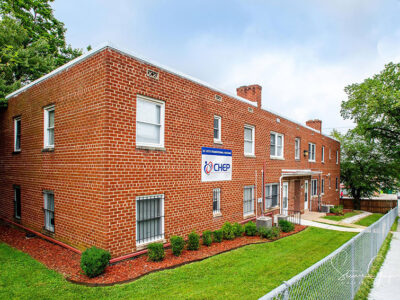Since 2009, the United States has cut the number of veterans experiencing homelessness in half, with some communities functionally solving homelessness during the same period.
As communities get closer to that goal, they have begun to consider how VA Transitional Housing Providers can continue to be part of the solution to ending veteran homelessness, namely by evolving their transitional housing programs to align with the needs of veterans in their communities. For an increasing number of providers, this means physically converting some or all of their transitional housing units into Housing-First-focused permanent housing.
This resource is intended for current VA Transitional Housing Providers who, after reviewing data on the needs of veterans in their communities, are interested in making that transition.
This document provides a brief overview of a more comprehensive toolkit. Download this overview as a PDF here. For more information and access to the complete toolkit, please contact our Housing Systems team at housingsystems@community.solutions.
Differences between operating VA Transitional Housing and permanent housing
There are several differences between operating VA Transitional Housing and permanent housing, particularly when it comes to local and federal housing policies. The table below highlights a few of the key differences:
| VA Transitional Housing | Permanent Housing |
|---|---|
| Participants may sign program rules and have responsibilities towards those rules | Tenants sign a lease and are obligated to those terms, including paying rent |
| Housing is time-limited; participants must leave after a set time | Housing is not time-limited; tenants residency is based on the duration and terms of the lease with annual renewals |
| Participants may have curfews (and other program rules) | Tenants do not have curfews and have tenant rights based on lease/rules |
| The VA Transitional Housing Provider is not bound by local or federal housing laws, as participants do not have a lease or pay rent | Housing Providers must follow all local and federal housing laws, including and especially Fair Housing |
| Unit configuration can vary and can be congregate, shared, or single room | Units are typically occupied by one household and have a private kitchen and bathroom |
The steps to conversion
There are several steps to converting transitional housing beds for veterans to permanent housing. Here is a high-level overview of the process and the questions your organization should be considering at each stage:
Step 1: Consider whether conversion is the right choice
The first question a VA Transitional Housing Provider should ask before embarking on this journey is whether the reduction of Grant and Per Diem beds is in alignment with their organizational and community goals as the best way to support veterans in need of housing.
This means analyzing the data on veterans experiencing homelessness in their community, gaining consensus on the community need, and ensuring internal operational alignment from staff to the Board of Directors. Importantly, organizations should also consider grant requirements based on current transitional operations and VA Capital Grants. Even if there is organizational and community buy-in, if the conversion would conflict with current grant requirements, the provider may need to postpone the timeline until such requirements are no longer in effect.
Step 2: Determine your vision for permanent housing
Having a vision shared amongst all partners is essential to the successful implementation and operation of permanent housing, especially for veterans who have experienced homelessness.
The vision statement can include an overarching goal of housing stability for the tenants and an outline of how the parties — tenants, building management, and the social services team, if any — will work together to achieve that goal. Establishing this vision early in the process allows organizations to appropriately allocate funding and physical space as needed to support that vision.
Step 3: Create a schedule for the conversion
Once a provider has clarity on community needs and goals, organizational capacity, funding opportunities, and a feasibility analysis inclusive of feedback from real estate professionals, local building agencies, and the VA, they can determine a timeline for converting the units.
Step 4: Identify sources of funding
In general, converting transitional housing units to permanent housing requires two types of funding: capital and operating.
Capital funding is used to update or rehab existing units, and will almost always require external financing in the form of grants and/or loans. Operating funding is used to support the project’s expenses, including staff salaries and ongoing maintenance. The majority of operating funding will come from rent — paid by the tenants directly or via housing subsidies.
Providers should work with a real estate professional to determine the amount of funding required for both capital and operating expenses, and work with community leaders and agencies to identify sources.
Step 5: Complete capital repairs or rehabilitation
Capital repairs may be a small or significant part of the conversion process depending on whether the units are currently configured as private apartments with their own bathrooms and kitchen, are accessible, and/or if there is any environmental remediation needed. While providers can lease units with shared amenities to minimize capital costs, they will likely be hard to lease, both because they are less desirable to tenants and because most housing subsidies can only be used for private units.
For these reasons, we recommend that all shared units be made into private units, typical of what one would see in an average apartment building.
Step 6: Decide how you will operate the property
The day-to-day of operating permanent housing is different from operating VA Transitional Housing, and it’s worth considering whether it makes sense to build organizational capacity to manage the property in house or contract the work out to a property management company.
Either way, it’s important to consider the role of Housing First and ensure that the lease, community rules, tenant selection plan, and all other essential documents align with the organization’s mission and comply with local and federal housing laws.
Step 7: Tenant Selection
As a former VA Transitional Housing provider, it is likely that your target tenant population will be veterans. It’s important to have a detailed plan that explains exactly how tenants will be selected, required documentation from applicants, and tenant qualifications.
Again, ensuring compliance with local and federal housing laws is essential, and following Housing First principles and reducing barriers to entry wherever possible is also advisable.
Step 8: Lease-up and operate the building
After capital improvements are completed (if any) and the lease-up process has begun, housing providers are tasked with managing the property i.e. collecting rent, maintaining the physical property, and tenant relations. If property management has been contracted out per Step 6, then oversight of the property management company will be required.
For further information on each of the steps and additional information on permanent housing developments, standard operating procedures guidelines, and eviction prevention strategies please contact housingsystems@community.solutions.





